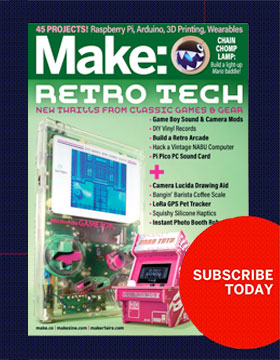

A picture might be worth a thousand words, but an interactive sound work called GRIDI suggests that a picture might also be worth an infinite number of midi loops! GRIDI was made by musician Yuvi Gerstein as a sonic interpretation of one of Damien Hirst’s Spot Paintings, which is on display at the Israel Museum where GRIDI was first exhibited. The work combines the aesthetics of Hirst’s work with the functionality of a digital music sequencer, like Ableton Live, to create a visually striking sound sculpture that the audience can physically engage with.

GRIDI consists of four wooden plates, into which a sixteen by sixteen grid of circular divots were cut by a CNC machine. Each of these divots has an LED and a button in its center, which are hooked up to a couple of Arduino Unos. When a transparent ball is placed in a divot, the button is triggered, the LED lights up, and the sound corresponding to that particular divot is played in the musical sequence. The whole piece is controlled by a macbook pro running Arduino software and Ableton live 9.
The grid format of the work mimics the layout of a digital music sequencer, but the transparent balls make it much more tactile and intuitive to use than a computer. Viewers can easily interact and collaborate with each other by placing the balls onto different divots in order to create musical compositions in real time.

I got in touch with Gerstein to find out more about the process of creating such an engaging work and how it was received by the audience.
I love how accessible the project is, it looks like the audience was keen to play with it. Were you surprised with how the public interacted with the work?
I was thrilled to see the public’s reaction to the project, especially differences between age groups, musician and non-musicians. I recently had a chance to exhibit at a music tech conference with a lot of families with kids. The kids were treating it like any other game. They loved the visual aspect, moving the balls around, creating shapes and watching the lights go by. It was great to see their joy of discovery and play.
Some older people were a bit intimidated by it, afraid to make a ‘mistake’ or ‘ruin’ the music, while others, mostly musicians, were creating patterns which make more musical sense. For non-musicians it took a moment to understand the concept, but after a short explanation, there was a “wow” moment and an urge to try composing something on their own. Overall, the reactions have been great so far and it is a highlight wherever it is exhibited.
What did you learn from this project? And what would you would do differently if you could start over?
I am a musician first and foremost, so it was a learning curve to get into the maker’s world. I definitely did not expect to have so much soldering work (256 contact points, over 2000 wires), but when the scale of the project dawned on me, I was already working on a deadline, so the only option was to spend a few white nights at my apartment with the team, soldering and drilling away until it was just right. I’m not sure if I would have made it smaller, because the size (2.8 × 1.65 meters) is part of the impact it makes, and the idea of the project, but I would have loved to make it from a lighter material, because each plate is made of CNC cut MDF wood, which makes it heavy and hard to move around. Technically, If I could make it again I would design and print a circuit board instead of soldering it (four boards). That took ages to do. I heard printing a circuit board is rather cheap these days, so that would be a great time saver.
Do you have any plans to continue to develop the ideas behind this work in future projects?
I think there is so much potential for GRIDI to be exhibited around the world. I’d be happy to create more copies of it in different sizes and exhibit it around the world. It could be used as a great learning tool at schools and colleges. It could also be amazing for people with disabilities, to make music in an easy visual way without the need for a computer.
GRIDI was exhibited in “Contact Point,” an event at the Israel Museum in August of this year, but Gerstein hopes to eventually find a permanent home for the work where visitors can interact with it.
2 thoughts on “Create Big Music Mashups on This Enormous MIDI Sequencer Board”
Comments are closed.
ADVERTISEMENT
Join Make: Community Today












They should add music PAD mode (using easy synchronized loop) for instant play interaction.
Till I saw the draft that was of 8946 dollars, I accept that my friend’s brother was like really generating cash in his free time with his pc. . His aunt’s neighbor has done this for only 8 months and by now repaid the loan on their home and bought a new Car .Why not try this.
azsd….
CLICK Here For Details
░▒▓░▒▓░▒▓░▒▓░▒▓░▒▓░▒▓░▒▓░▒▓░▒▓░▒▓░▒▓░▒▓░▒▓░▒▓░▒▓░▒▓░▒▓░▒▓░▒▓░▒▓░▒▓